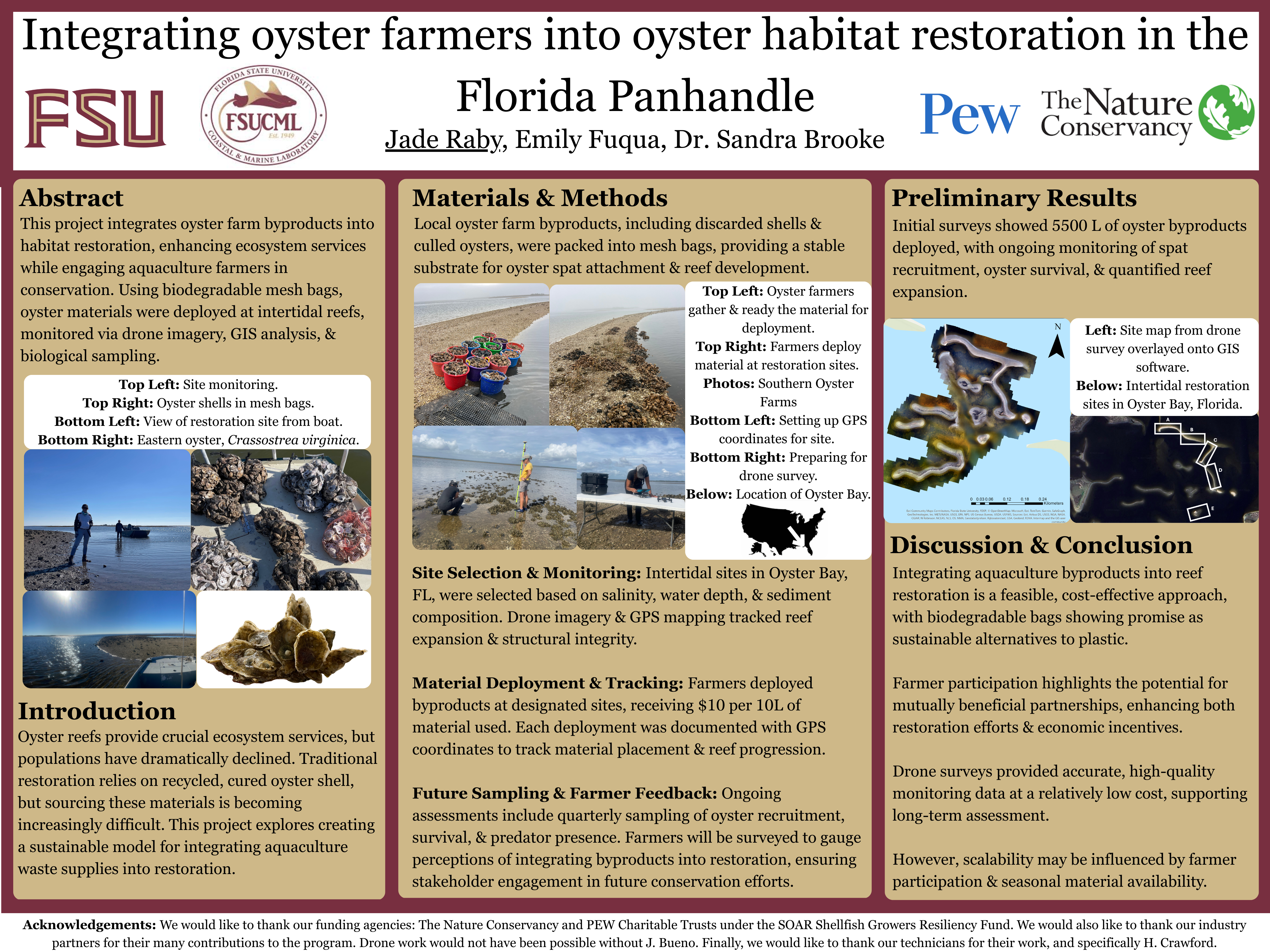Research Symposium
25th annual Undergraduate Research Symposium, April 1, 2025
Jade Raby Poster Session 3: 1:45 pm - 2:45 pm/ Poster #136
BIO
My name is Jade Raby, and I am a second-year undergraduate student studying biological science. My career goals are to earn a master’s degree (M.S.) in marine biology, contribute to cetacean research, and advance to a leadership position that uses science communication skills for marine conservation education. I am interested in pursuing a career in research focused on cetacean ecology, behavior, and physiology along with utilizing my expertise to impact marine conservation and engage with the public through science communication.
Integrating oyster farmers into oyster habitat restoration in the Florida Panhandle
Authors: Jade Raby, Emily FuquaStudent Major: Biological Science
Mentor: Emily Fuqua
Mentor's Department: Department of Biological Sciences Mentor's College: College of Arts and Sciences Co-Presenters:
Abstract
To advance oyster restoration initiatives, this project addresses the need for collecting reef rehabilitation materials—which are often inaccessible and expensive—and the issue of oyster farmers facing profit losses due to unintended byproduct production. This project explores the integration of farmed oyster byproducts into habitat restoration to enhance ecosystem services and engage aquaculture farmers in conservation efforts. This pilot study by the FSU Coastal and Marine Laboratory assesses the effectiveness of using oyster farm byproducts, including shell and wild spat, for restoring intertidal oyster reefs in Oyster Bay, Wakulla County, Florida. The primary objectives are to determine the suitability and availability of these materials for restoration, evaluate the efficacy of biodegradable mesh bags as an alternative to plastic, and assess farmer engagement in restoration initiatives. Restoration materials are deployed by participating farmers, who receive compensation per unit of material used ($10 per 10L material). FSUCML staff employ drone-based surveys, geospatial analysis, and biological assessments of spat recruitment, oyster survival, and predator presence to monitor restoration progress. Initial drone surveys have been completed, and to date, farmers have deployed 5550 liters of material from farms. Expected outcomes include increased farmer participation in restoration efforts, enhanced reef stability, and expanded ecosystem services, such as improved water filtration and shoreline stabilization. If successful, this approach could establish a scalable model for integrating aquaculture waste streams into long-term restoration strategies, fostering a more resilient coastal oyster ecosystem.
Keywords: oyster, aquaculture, restoration, habitat, ecology


